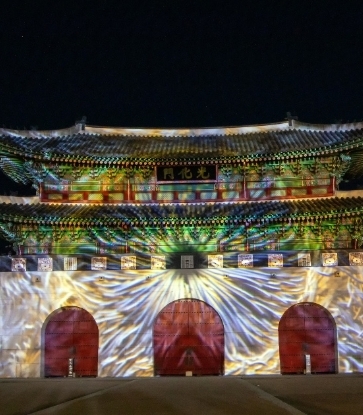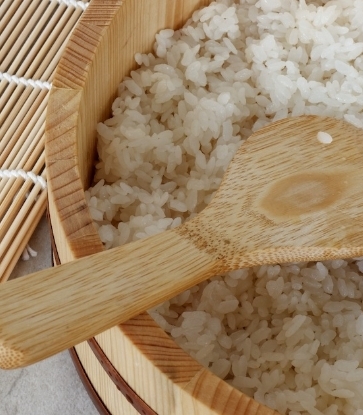The recently released MICHELIN Guide Seoul 2021 reflects the dynamic landscape of Seoul’s gastronomic scene, with a selection of restaurants to introduce to the city’s gourmands. One of the most anticipated aspects of every edition is the new inductions, as diners look forward to discovering the cuisines from freshly assigned Star, Bib Gourmand and Plate restaurants.
In its fifth edition, the MICHELIN Guide Seoul 2021 highlights the recent advancement of Japanese restaurants. The guide includes four new One Star restaurants, of which two restaurants – Mitou and Muni – are serving Japanese cuisines. Sandai, a kaiseki restaurant, joins the list with a MICHELIN Plate recognition.
While 2020 has been difficult, there’s still an opportunity to wrap up the year and prepare for the future with a bit of sparkle in hand. Taittinger, a partner of MICHELIN Guide Seoul 2021, is one of the world’s most loved Champagne labels, especially for its perfect pairing with fine cuisines. Founded in the 1930s, this family-run Champagne marque has built a long-standing reputation for its exacting quality and style. With the fourth generation of the family leading the company, Taittinger continues its dominance as one of the global 10 best-selling Champagnes brands every year.
To celebrate the year-end holidays, our chefs from restaurants who are newly listed in the MICHELIN Guide suggest a range of delicious dishes to enjoy with the Champagne. Muni and Mitou, which earned their first Star, and Sandai, one of the new Plate restaurants, all have something in common: they bring out the best taste of seasonal ingredients and deliver them delicately to the diners’ tables. Champagne Taittinger's golden hue, discreet yet lingering bubbles and lively flavors of fresh fruit and honey make a perfect match with the chefs’ seasonal dishes.
Muni | Chef Kim Dong-wook
(new) 1 Star, MICHELIN Guide Seoul 2021
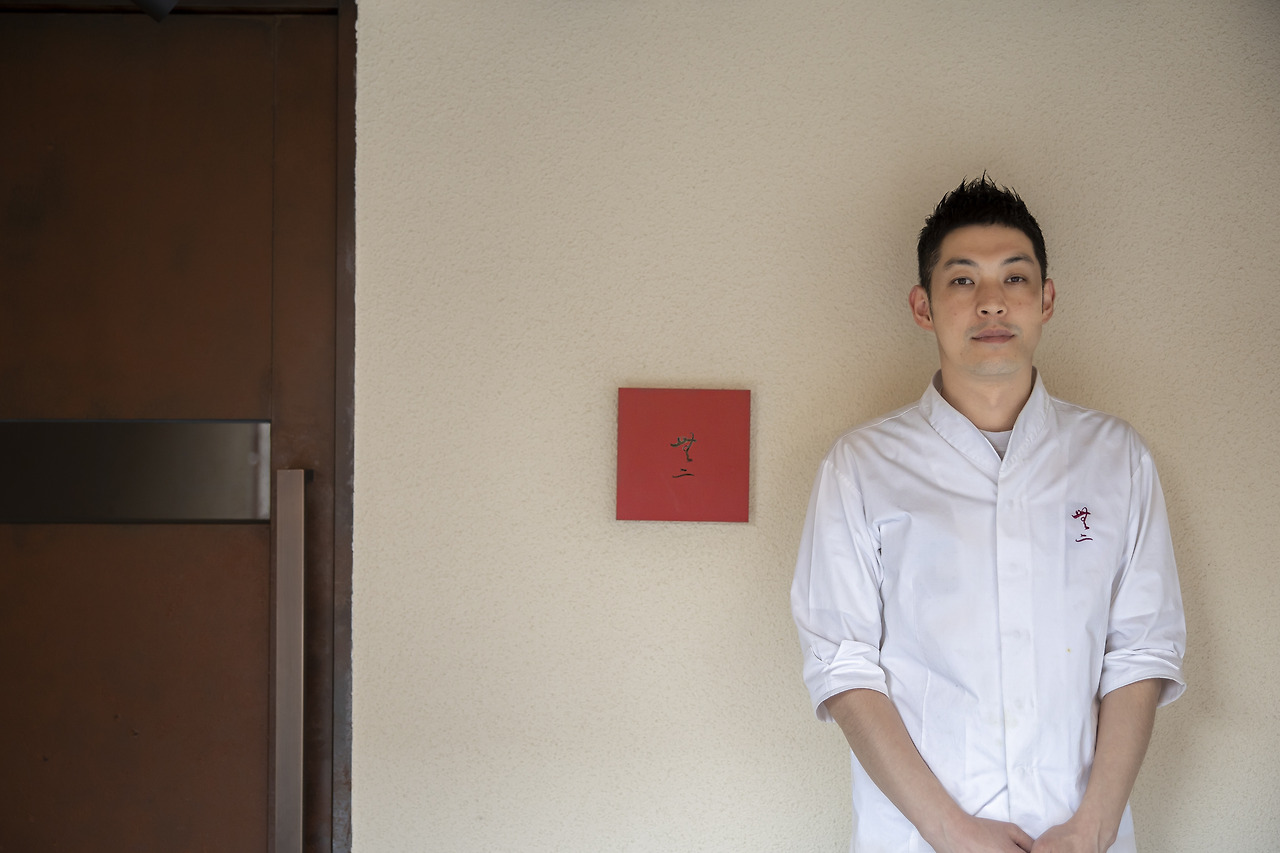
Diners who visit chef Kim Dong-wook’s Muni may anticipate 'the best taste of good ingredients'. His dishes clearly encapsulate the flow of the season and harmonize the traditions of Japanese cuisine with the chef's character. "I hope our guests enjoy their food and drink in a comfortable atmosphere while watching us cook. To do so, we should always keep our original intentions and be firmly based on the basics, putting our sincerity into each bowl to make good food. And it's my principle not to calculate about how much it will cost to provide good ingredients," chef Kim explains.
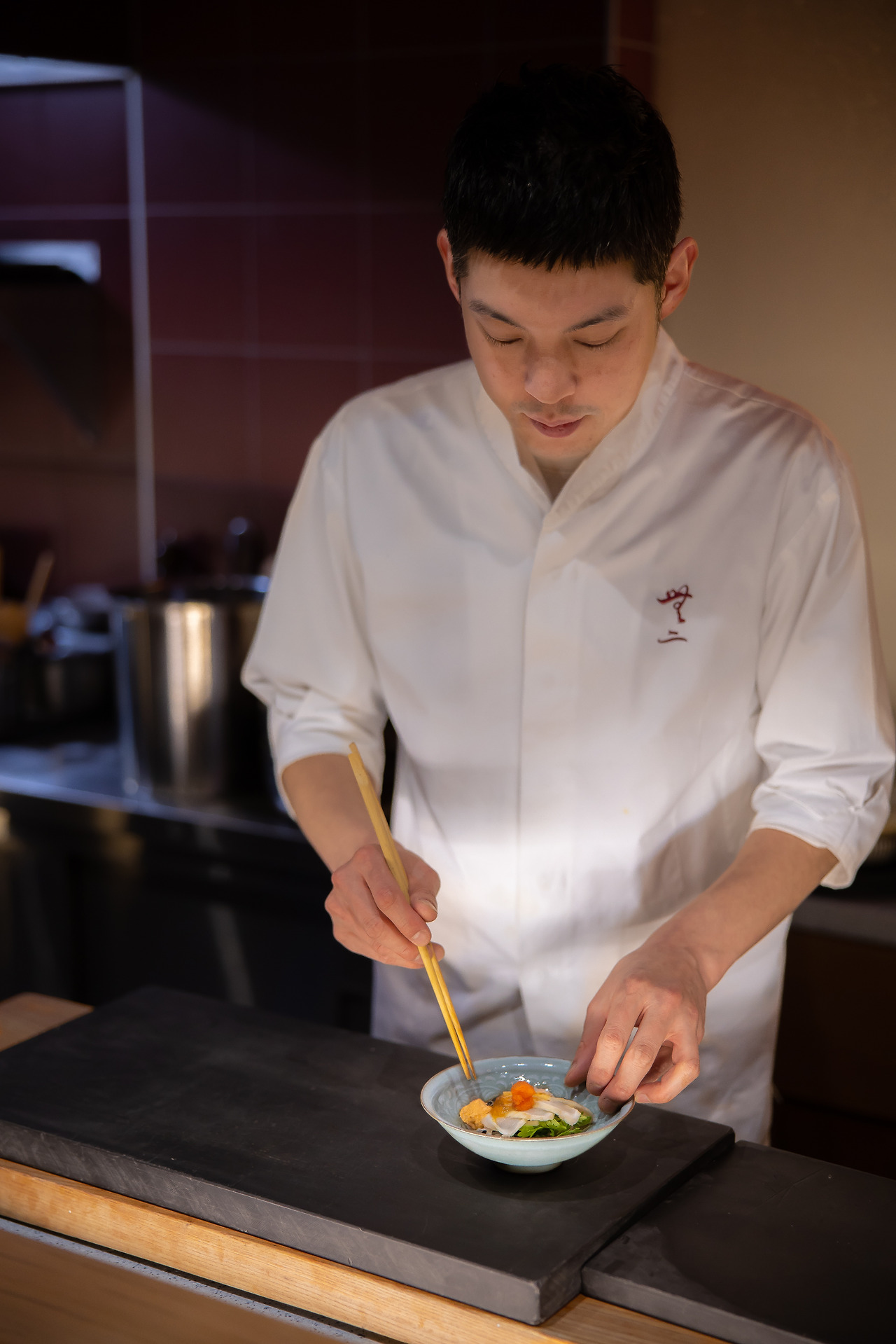
He further expresses his thoughts on being selected as a One Star restaurant: "I was really surprised because I honestly thought it was impossible to be selected, being in the Japanese cuisine category in Korea. I often visit Japan to learn and experience cooking, and I really understand what a MICHELIN Star means in the Japanese restaurant world. Those Star restaurants in Japan always impressed me, so much so I almost feel like I can’t reach their high standards. I was happy to hear the news, but it's also true that I still have a long way to go. I'll continue to work harder with a humble attitude."
Chef Kim Dong-wook adds that all restaurant workers who suffered tough times during this pandemic would have a similar sentiment, namely that "Everyone is doing their best to overcome COVID-19, and I hope we can welcome our guests as we did in the past – as soon as possible."
Muni’s Yuzu Pot with Shirako and Takifugu Tataki with Taittinger Comtes de Champagne Blanc de Blancs
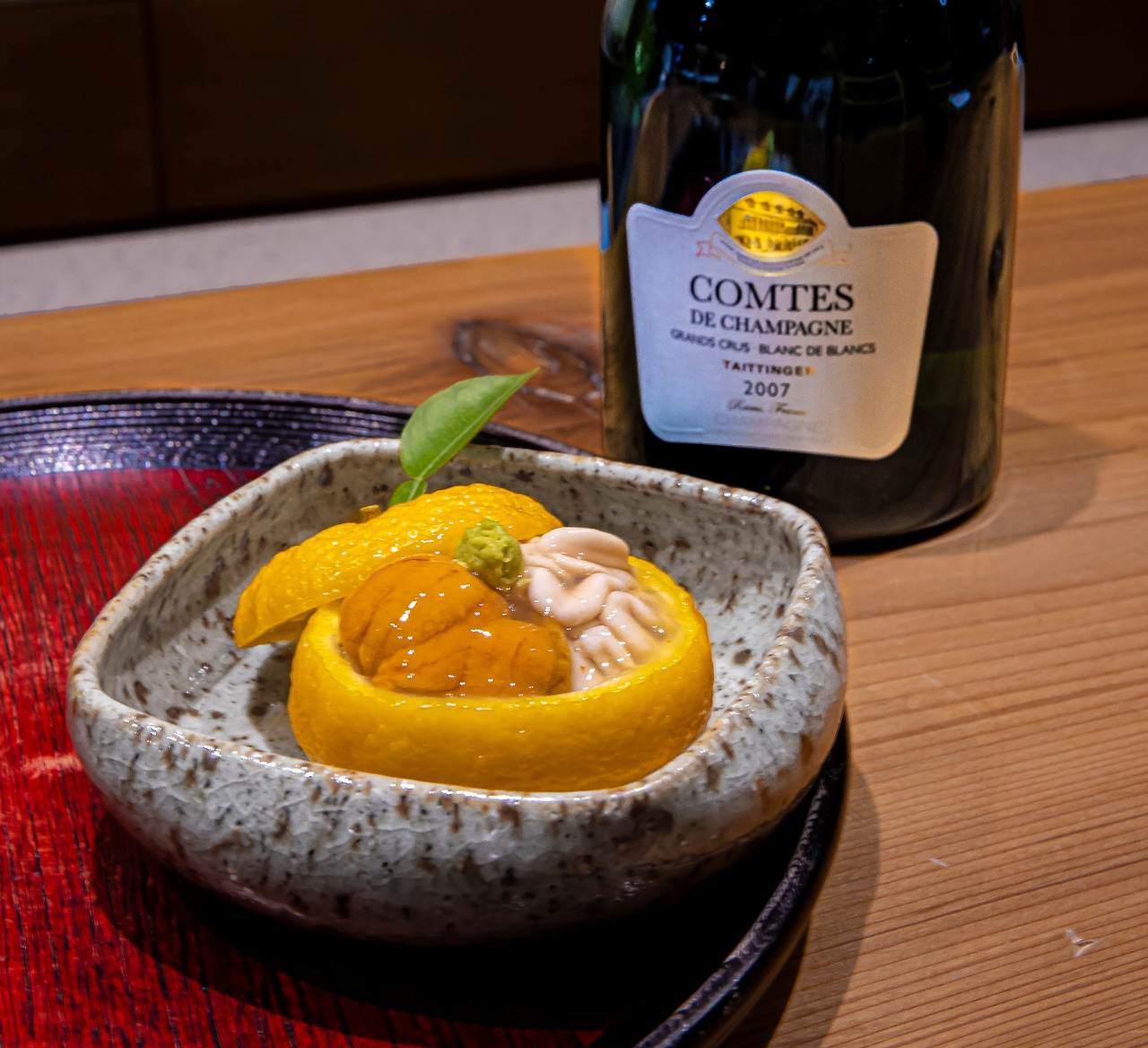
"The first dish that goes well with Champagne is our Yuzu Pot with Shirako. It comprises steamed yuzu with shirako and sea urchin. After removing the contents of the yuzu from its skin, it is steamed to prepare a citron bowl. Place the low-temperature cooked shirako and sea urchin, and put the katsuo-dashi and wasabi on top to finish,” says chef Kim. He explains that the combination of the lightness of glutinous rice and shirako, the rich flavor of sea urchin roe, and the fresh scent of yuzu makes a perfect match with the delicate flavor of Champagne.
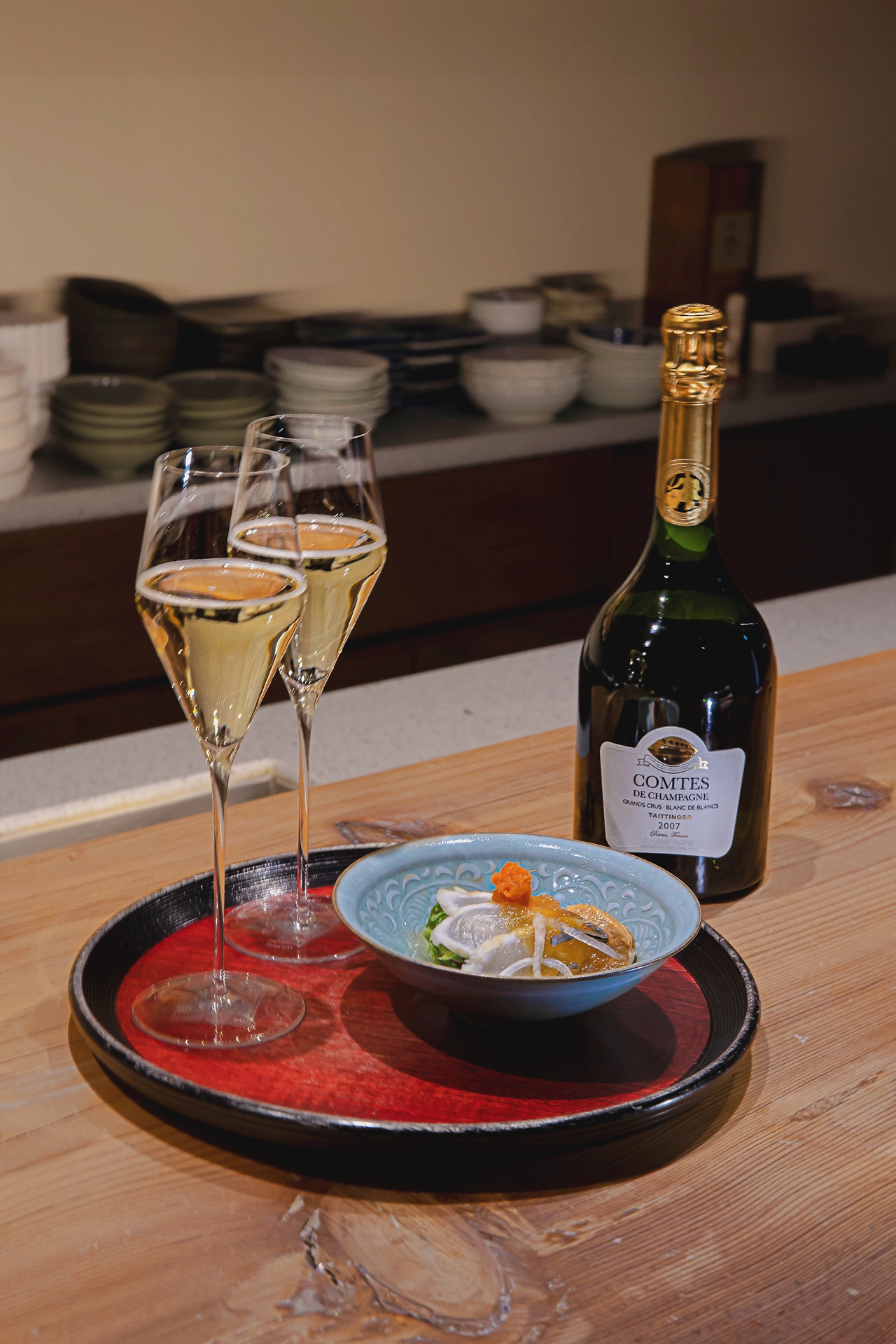
The next dish is Takifugu Tataki, which delivers a combination of savory and refreshing tastes from ankimo (monkfish liver) sauce and ponzu (citrus-based sauce). "The takifugu (pufferfish) is prepared by frying its surface in hot oil and thinly slicing it. We put the sashimi and pufferfish skin on the seasonal salad, and a dressing with ankimo sauce made of monkfish liver and ponzu. It's a dish that shows takifugu’s clean taste, the rich flavor of ankimo, and the refreshing touch of ponzu. The palate is lively, fresh and in total harmony. I think Taittinger Comtes de Champagne would be the best marriage," he enthuses.
Taittinger's top offering, the Comtes de Champagne Blanc de Blancs is made exclusively with Chardonnay from the five villages in the Côte des Blancs with Grand Cru classification. A stream of delicate, persistent bubbles runs through its sparkling golden robe with glints of green. The aromas of pear, lime, white pepper and orange blossom are weaved with hints of licorice and slightly toasted notes. This vibrant Champagne is paired beautifully with Muni’s delicate food, leaving a lingering taste and aroma in the mouth.
Mitou | Chefs Kwon Young-woon and Kim Bo-mi
(new) 1 Star, MICHELIN Guide Seoul 2021
Mitou means ‘not yet arrived’. The two chefs, Kwon Young-woon and Kim Bo-mi, explain that they are aiming to present a new Japanese cuisine that reflects the contemporary Korean dining scene. Having studied Japanese food in Japan, the two chefs respect the cherished traditions and framework of the cuisine, while continuing to pursue progress outside its confines. Koreans account for a large portion of the guests who come to Mitou, so the chefs take into account Korean eating habits, dining experiences and expectations even as they add their own colors and characters to the craft.
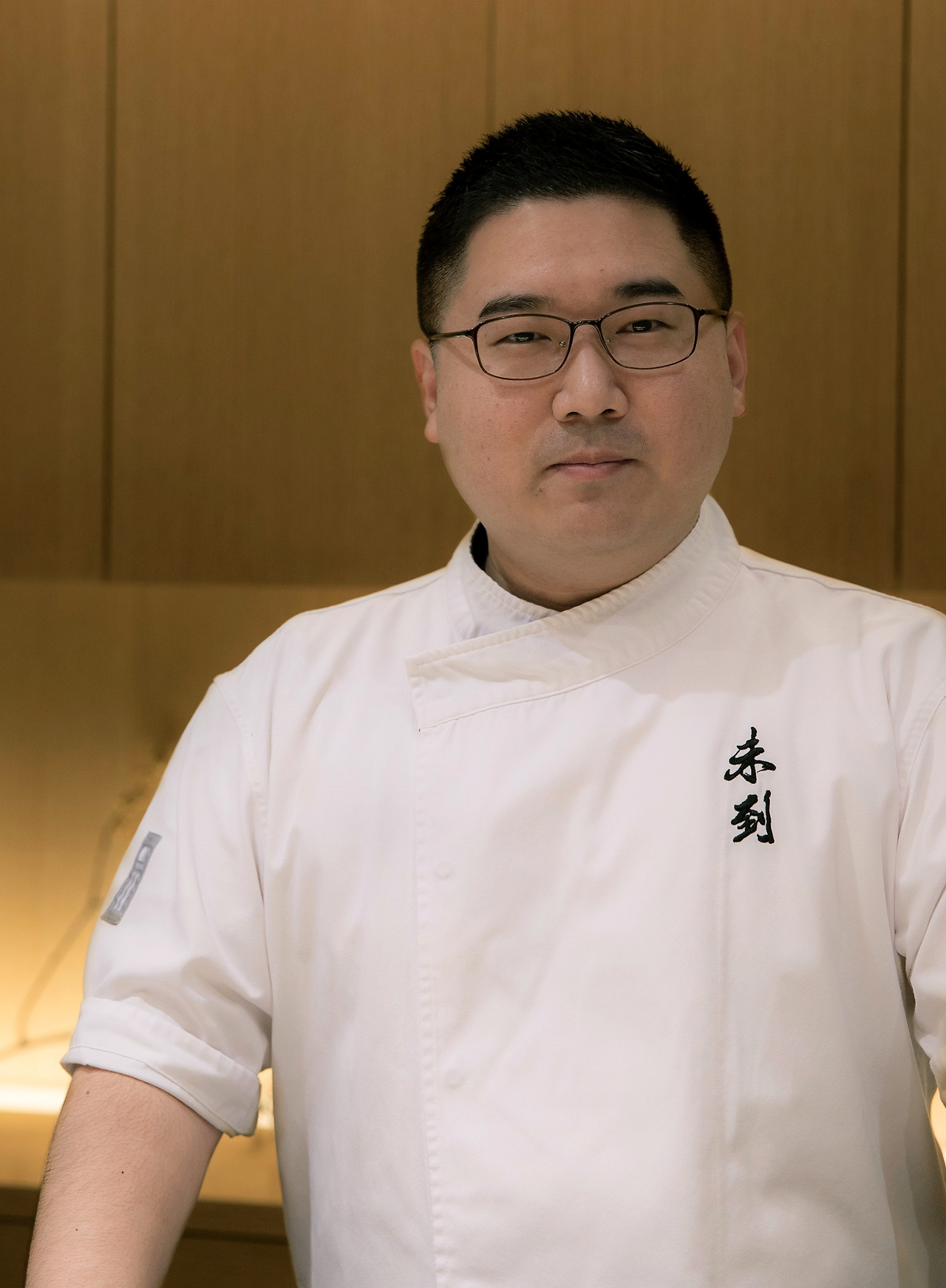
"The characteristics of the ingredients and eating habits of the Edo era are different from what they are now. There are many subdivisions and specialized restaurants, and the food culture of the world has become widely accessible; while the diners’ standard is higher than ever. The climate, geography, culture, people who eat, and people who make it are different from Japan, so I'm trying to express Japanese cuisine that is tailored to our country rather than recreating it," says Chef Kwon Young-woon.
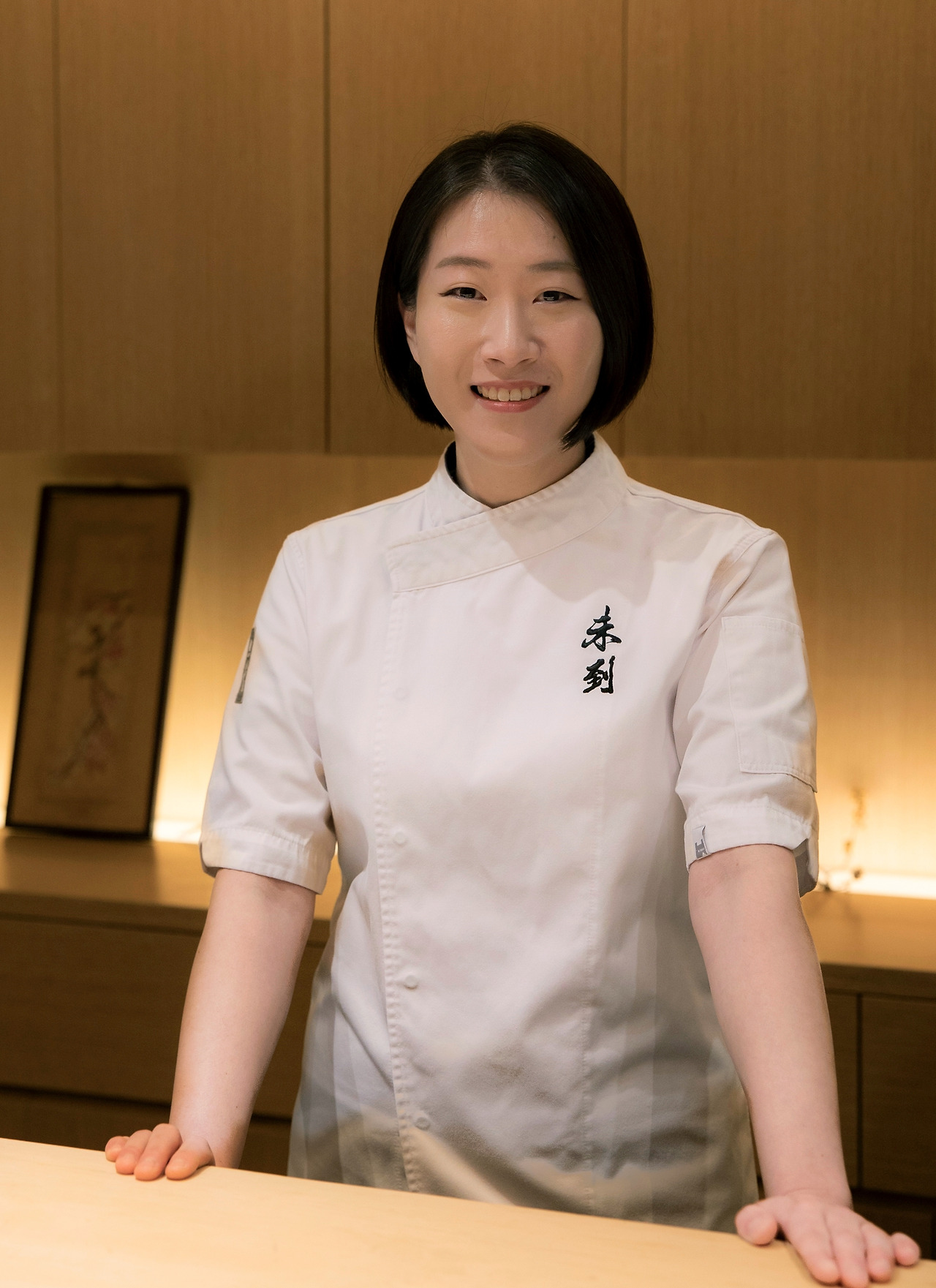
Chef Kim Bo-mi expressed his surprise and gratitude for the inclusion in the MICHELIN Guide Seoul 2021."I didn't expect to be selected as One Star. Our aim was to create a new Japanese cuisine in Seoul, which is developed based on different characteristics from Japan, that Japanese chefs can also be curious about and be interested in. Taking inspiration from our name Mitou, I appreciate the recognition as a driving force to move forward towards a point that we have not yet arrived."
Mitou’s Signature Savory Monaka with Taittinger Brut Reserve

Chef Kim Bo-mi suggests a savory monaka, a signature dish of Mitou for the Taittinger Brut Reserve. Monaka, which is often enjoyed as a dessert, is reinterpreted as a modern savory appetizer. "Monaka, a traditional Japanese snack, is often eaten as a dessert, but we have prepared classic ingredients such as matsukaze and iburi gakko with it. Matsukaze – matsu meaning pine, kaze meaning wind – is a Japanese terrine made by grinding chicken tenderloin. It is also a traditional Japanese dish eaten during new year celebrations. And iburi gakko is a smoked pickle of Akita prefecture. The ingredients in monaka vary depending on the season, and now in winter, we add iburi gakko, cream made of Neungi mushrooms and matsukaze, and complete it with cream cheese, soft persimmons, and truffle."
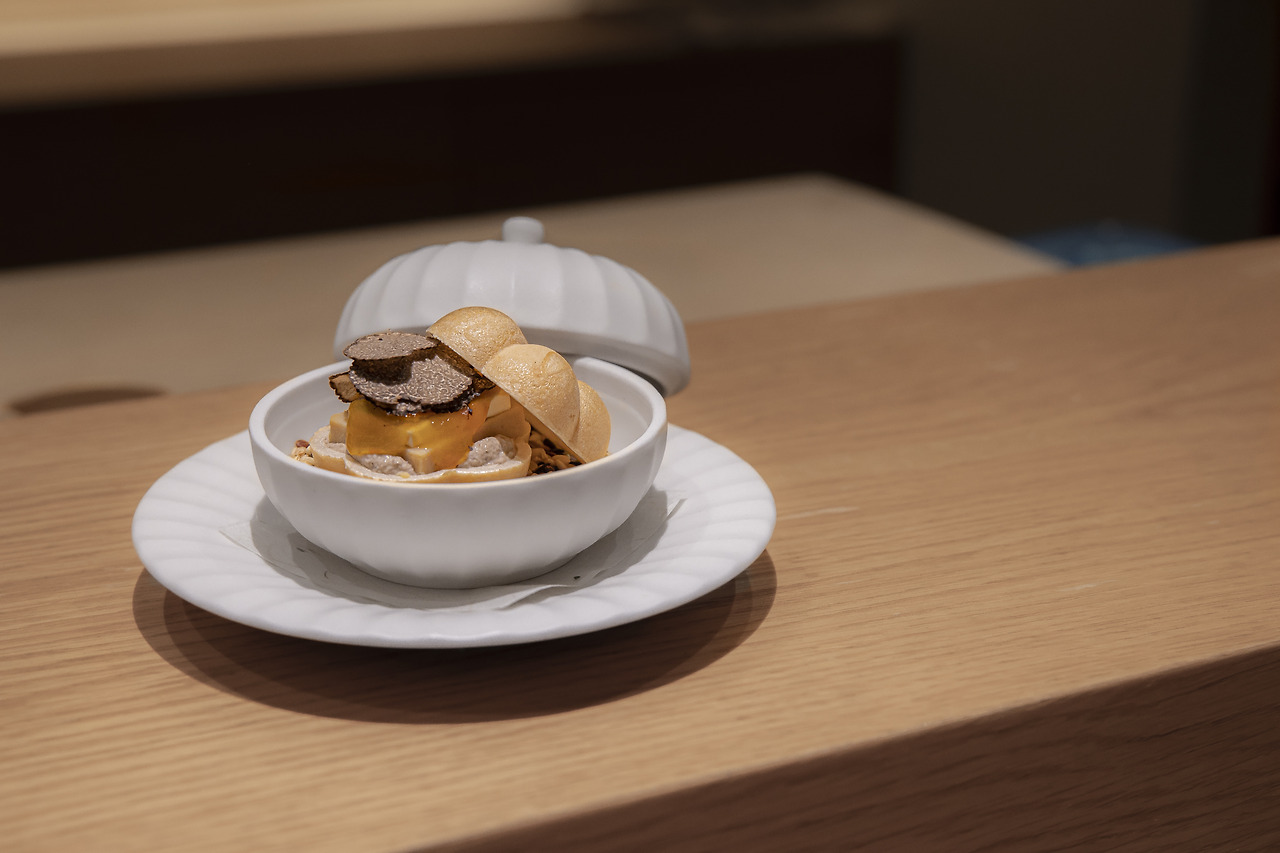
Chef Kwon Young-woon adds that the elegant acidity and delicate minerality of Champagne Taittinger give sparkle to the crispy monaka in an excellent pairing. "Monaka is a rare dish in Japanese cuisine that gives you the fun of holding and eating with your hands. That's why I think it's good to pair with Champagne. People might think Japanese liquor is best suited to Japanese cuisine, but we try to suggest alternative pairings.”
The Taittinger Brut Reserve with aromas of fruit and brioche and the fragrance of peach, white flowers and vanilla pod shows a good harmony with Mitou's signature monaka. The light and crispy texture and rich flavor of monaka brings a pleasant balance to the bright Champagne.
Sandai | Chef Moon Seung-ju
(new) MICHELIN Plate, MICHELIN Guide Seoul 2021
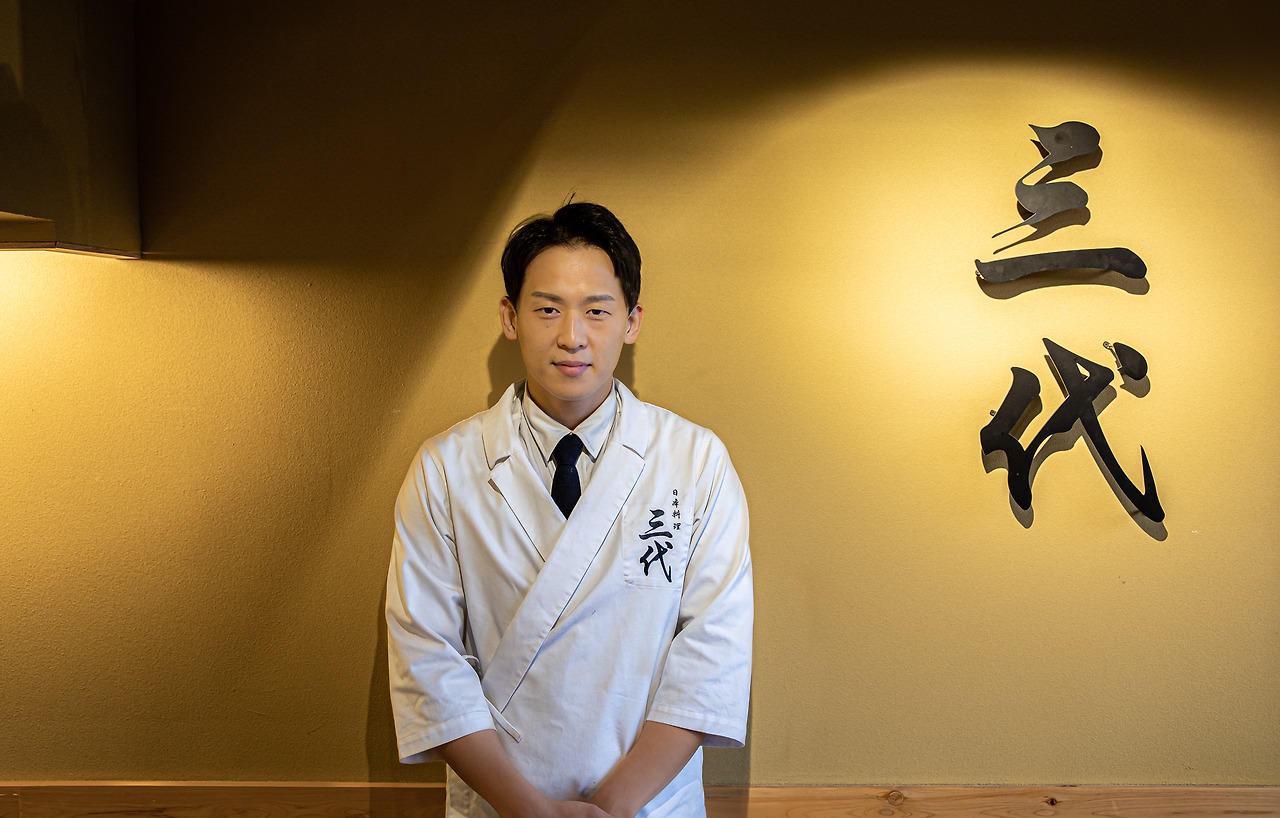
Chef Moon Seung-ju's restaurant Sandai is located in what seems like an ordinary building in Seoul. However, as you exit the elevator and walk through the short hallway before entering the dining hall, a whiff of chef's chosen scent fills the air, reminiscent of similarly peaceful spaces in Kyoto, Japan. At Sandai, diners enjoy their kaiseki meals with intimate views of chefs in action at the bar counter. Together with a small, well-kept garden beside the dining counter, one may feel transported from the busy reality of Seoul.
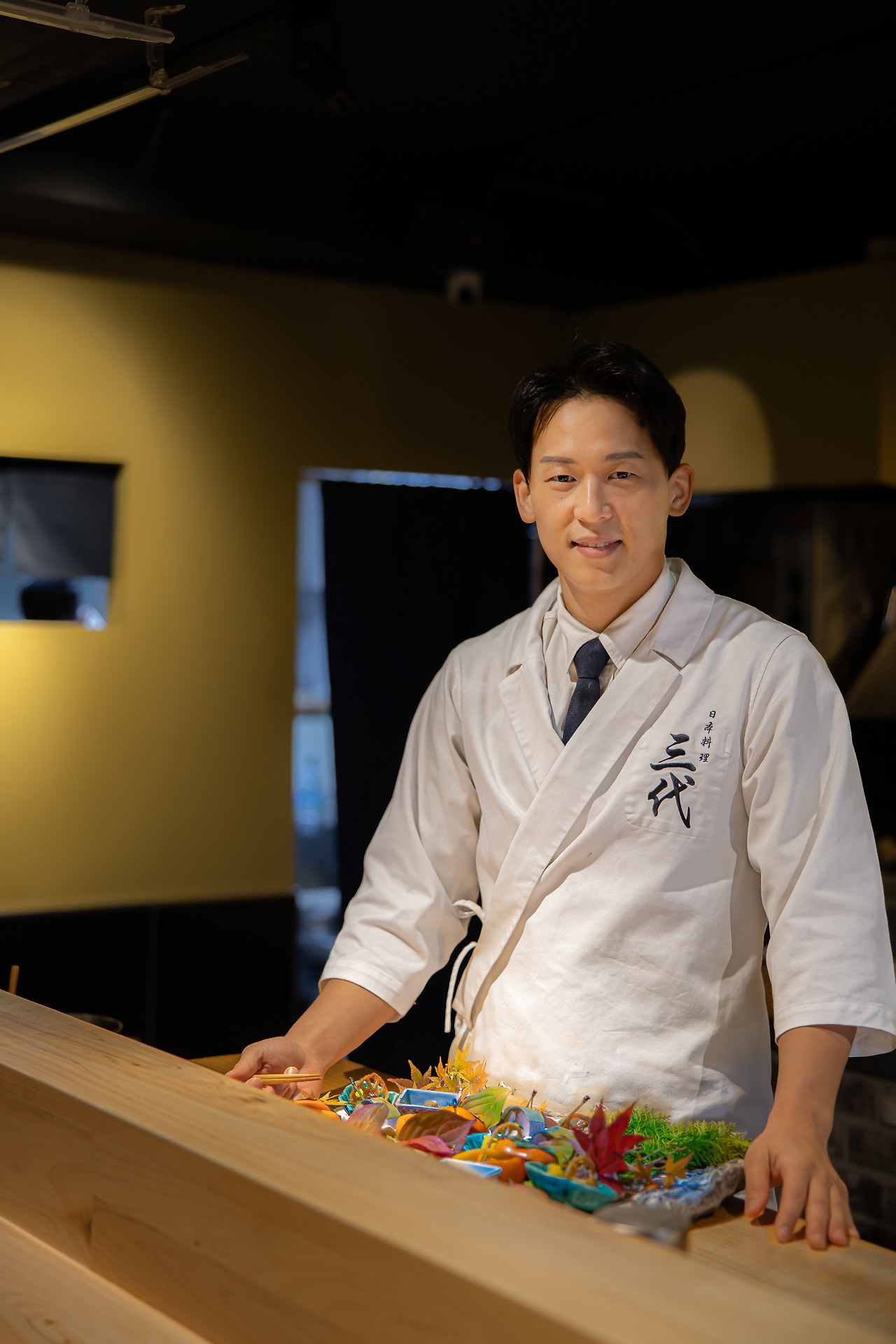
Chef Moon Seung-ju says that his dream is to create a space where he can serve guests for generations, which is encapsulated in the name of the restaurant, meaning “three generations” in Japanese. "It's been a tough year due to the pandemic, but I'm very grateful to all the guests who have not forgotten to come and cheer for us even in this difficult time. The human will is like water, so I think nothing can stop it. It can cross a mountain and plunge like a waterfall, but it always reaches where it needs to go. I think everyone will finally return to their normal lives."
Sandai’s Hassun with Taittinger Brut Reserve
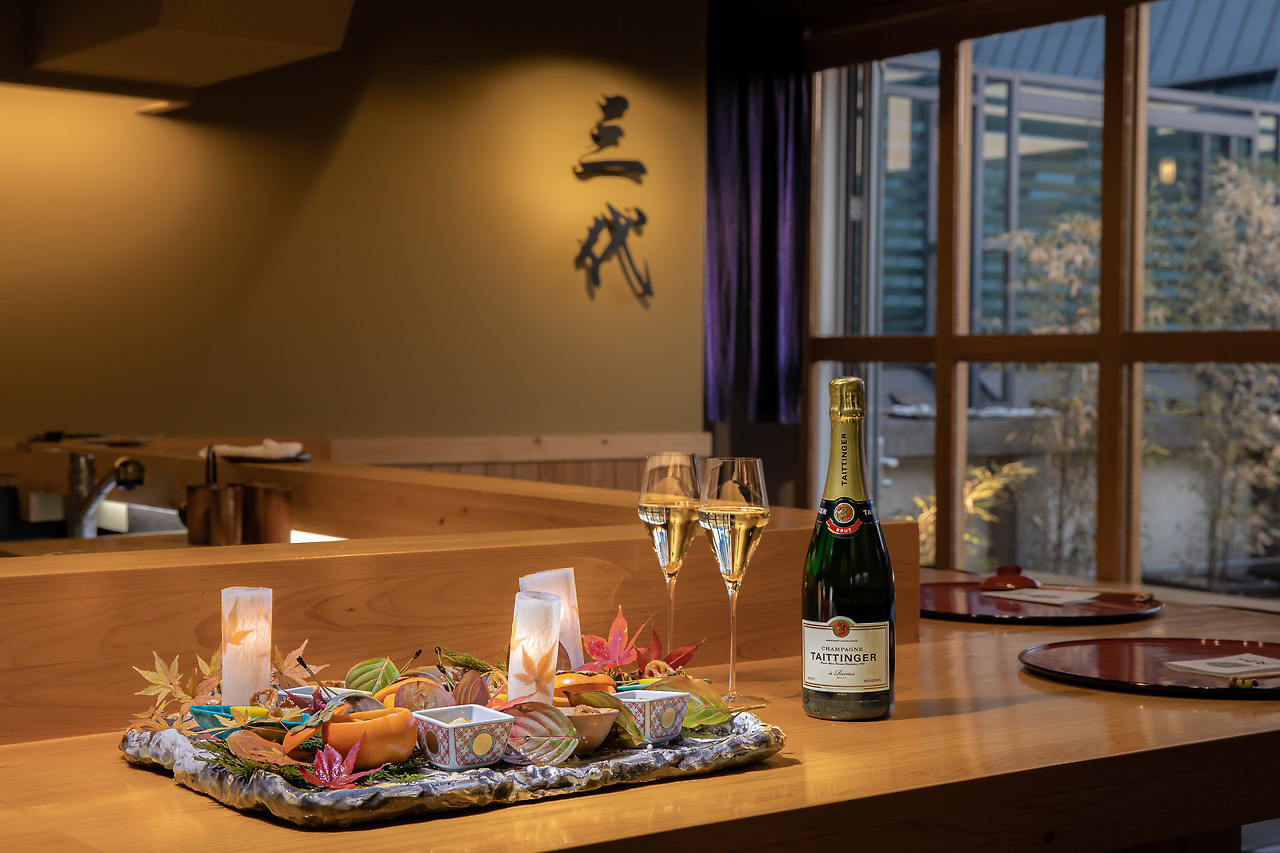
“Hassun (八寸) is the second course of kaiseki, which sets the seasonal theme. It contains small dishes made with various ingredients from land, sea, and air. In modern times, it has evolved into a dish that brings together different kinds of food on one platter, like the hors-d'œuvre in French cuisine. Hassun is the most colorful and varied course of the kaiseki, which captures the seasonality to touch the diner’s senses and emotion. This is a dish that offers the best marriage with Champagne,” chef Moon Seung-ju recommends.
"Sandai's hassun has all five flavors, including savory, sweet, salty, sour, and bitter flavors, as different recipes are used for each dish. The temperature of the food is also varied, yet from cold food to hot food, you can pair a whole bottle of Champagne with just this plate.“
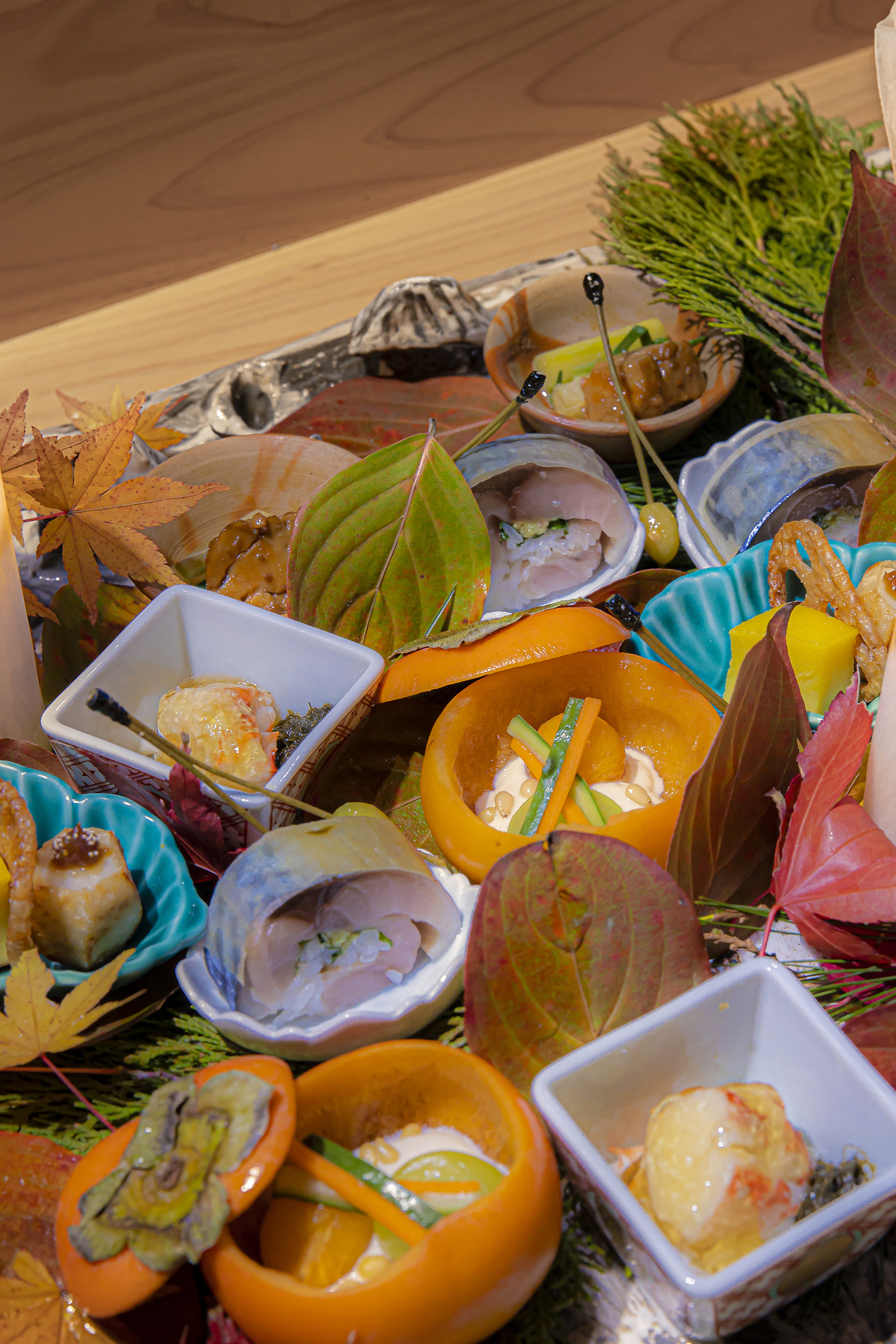
The acidity of fresh lemon and tangerine, the scent of white flowers and the flavor of soft and warm vanilla bean are freshly delivered in the mouth with elegant bubbles. That’s the enjoyment of Sandai's colorful hassun course with Taittinger Brut Reserve Champagne; appreciating different charms with each bite and sip, opening up an interesting and enjoyable world of gastronomy.
This article was originally written in Korean by Julia Lee and sub-edited in English by June Lee

The champagne houses that today, still bear the name of their owner and manager are few and far between. In the case of Taittinger, the name represents not just one man but an entire family. A passionate family that holds high standards and never compromises on quality. As Pierre-Emmanuel Taittinger himself once said: ‘We prefer to produce fewer bottles of champagne so that each time the cork is popped: delights, and enchants demonstrates that excellence is not a myth but a reality. Our patient and irreplaceable wine growers, our dedicated tasting and blending teams as well as our enthusiastic and highly experienced family work as one. Together we share the same vision: keeping the wonderful adventure of Champagne Taittinger alive for years to come.’










